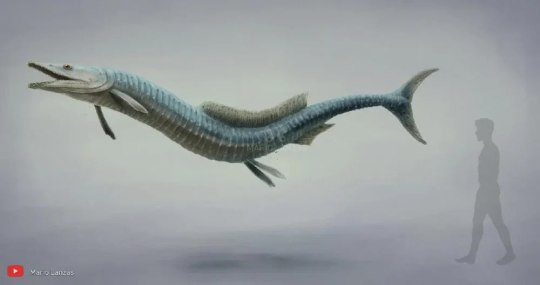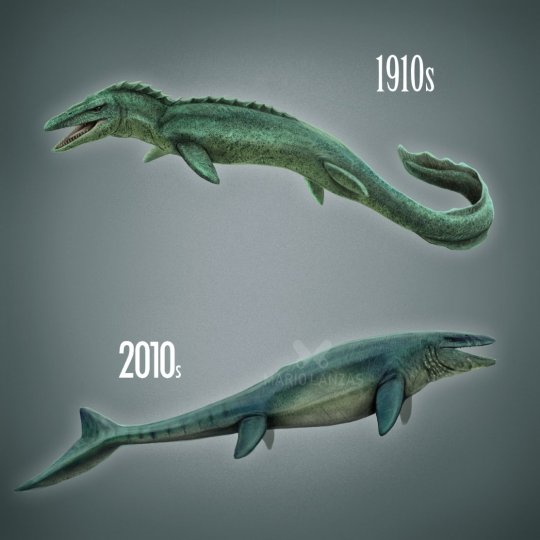#cretaceous-paleogene
Link
🌏 Get Our Exclusive NordVPN deal here ➼ https://www.nordvpn.com/spacenuts or use the checkout code SPACENUTS. It’s risk-free with Nord’s 30-day money-back guarantee! ✌
In this episode,hosts Andrew Dunkley and Professor Fred Watson delve into the cataclysmic demise of the dinosaurs, exploring various extinction theories with a fervent quest for truth, unraveling the enigmatic ancient puzzle while seeking to unearth the ultimate cause. In this episode, you will be able to:
·
Explore the fascinating theories behind the extinction of dinosaurs and gain a deeper understanding of this monumental event in Earth's history.
·
Discover the impact that star growth has on planets orbiting around them, unraveling the intriguing dynamics of celestial bodies.
·
Delve into the mysteries of the Andromeda galaxy, known for its massive black holes, and uncover the secrets hidden within its immense expanse.
·
Learn how gravity and Hawking radiation intertwine, shedding light on the intricate relationship between these fundamental forces of the universe.
·
Immerse yourself in the captivating discussions from the Space Nuts podcast, where space enthusiasts and science lovers engage in thought-provoking conversations about our vast cosmos.
·
Gain a deeper understanding of the theories surrounding the extinction of dinosaurs and uncover the mysteries behind their disappearance.
·
Explore the fascinating impact of star growth on orbiting planets, and how it influences the conditions necessary for life to exist.
·
Discover the captivating secrets of the Andromeda galaxy and its enigmatic black holes, expanding your knowledge of the vastness of the universe.
·
Unravel the intricate interplay between gravity and Hawking radiation, and its implications for our understanding of the fundamental laws of physics.
·
Delve into the Space Nuts podcast discussions and indulge your curiosity in a wide array of captivating space-related topics, offering a unique opportunity to expand your knowledge and engage with fellow space enthusiasts. It's extraordinary that 40 years after it was suggested, we're still finding out about this impact and seeing different aspects to it because of the devastation that it caused. - Andrew Dunkley
The extinction of dinosaurs has been a topic of intrigue for centuries. Various theories propose the cause to be major environmental changes, catastrophic asteroid impact, or major shifts in vegetation, leading to dental maladies among the dinosaurs. The most recent development in this field proposes a global winter induced by the fallout of an asteroid impact, a theory which aligns with the devastation level required to cause such a mass extinction. The resources mentioned in this episode are:
·
Visit thecosmosmagazine.com website to read more about the new theory on what caused the extinction of the dinosaurs.
·
Check out the paper titled Chicxulub Impact Winter, sustained by fine silicate dust in the journal Nature Geoscience for more details on the research.
·
Explore the concept of the Anthropocene period and human-induced climate change by searching for articles and studies on the topic.
·
Learn more about the sun and its evolution by researching yellow dwarf stars and stellar evolution.
·
Discover more about the star Ro Corona Borealis and its similarities and differences to our own sun by searching for information on the star and its characteristics.
·
Read the paper by Stephen Kane in the Astrophysical Journal to delve deeper into the research on planets orbiting sunlike stars.
·
In this episode of the Space Nuts podcast, you'll join host Andrew Dunkley as he delves into the fascinating world of space exploration and scientific discoveries. With his friendly and approachable style, Andrew takes you on a journey through various topics, from the theories surrounding the extinction of dinosaurs to the lifecycle of stars and the interplay between galaxies and black holes. He effortlessly combines scientific knowledge with humor and curiosity, making complex concepts accessible to all. Whether you're a space enthusiast or simply curious about the mysteries of the universe, this episode of Space Nuts is sure to captivate your imagination and leave you with a deeper understanding of our cosmic surroundings. So sit back, relax, and get ready to embark on an interstellar adventure with Andrew Dunkley and his guests on Space Nuts. Timestamped summary of this episode:
00:00:00 - Introduction
Andrew Dunkley introduces the episode and previews the topics to be discussed, including the extinction of the dinosaurs, planets orbiting a star similar to ours, and audience questions about Andromeda gravity.
00:05:38 - New Theory on Dinosaur Extinction
Astronomers in Belgium and the UK have proposed a new theory on the extinction of the dinosaurs. They have found evidence of fine silicate dust in the rock strata, suggesting that the impact of a massive asteroid led to a global winter, which caused the mass extinction event.
00:08:41 - Impact of Silicate Dust
The distribution of silicate dust from the asteroid impact was larger than previously estimated. This fine dust, about 1 micron in diameter, could have stayed in the atmosphere for an extended period, contributing to the global winter and the extinction of the dinosaurs.
00:02:16 - Fred's Travels
Fred Watson discusses his upcoming travels to Sea Lake in Victoria for an astronomy weekend and his trip to New Zealand for the hundredth anniversary of an astronomical society. He also mentions his participation in a meeting about dark and quiet skies and the impact of satellites on astronomers.
00:04:44 - Interesting Statistics
Andrew Dunkley shares interesting statistics, including the percentage of New Zealanders living in Australia (10% of their population) and the fastest-growing nationality moving to Australia (the Nepalese). He humorously advises Fred not to mix up Switzerland with Sweden, referencing a recent
00:17:05 - "Introduction to the Star's Lifecycle"
The star in question is a yellow dwarf in its midlife phase, approximately 4.57 billion years old. It is currently in a steady hydrogen burning phase, similar to the Sun. This phase will continue for another 4 billion years before it transitions into a giant star.
00:19:32 - "Planets Orbiting the Star"
The star, Ro Corona Borealis, has four known planets orbiting it. These planets are closer to the star than Mercury is to the Sun. One of the planets, Ro Corona Borealis d, is potentially in the habitable zone and could support life.
00:21:35 - "Impact of Star Growth on Planets"
As the star grows into a red giant, the planets' fate is uncertain. Some may evaporate or be torn apart by the gravitational effects. Others may be thrown out of the system and become rogue planets. The exact outcomes depend on the planets' orbits and interactions with other planets.
00:25:04 - "Predictions for the Planets"
The prediction for the four known planets is that one will evaporate within the star's atmosphere, one will spiral in and be tidally disrupted, one will be destroyed at the end of a phase of evolution, and the fate of the fourth planet is uncertain. There could also be other undetected planets that may survive or be influenced by the star's growth.
00:35:32 - The Spectacular Event of the Andromeda Galaxy
The speaker discusses the possibility of the Andromeda galaxy getting closer to our galaxy. Although the event would be spectacular, it would happen on a timescale that wouldn't affect us humans.
00:36:27 - Collision of Galaxies
The collision between our galaxy and the Andromeda galaxy would result in a phenomenal sight, but it would be a slow process that wouldn't impact us directly. Simulations indicate that the two galaxies will pass through each other multiple times before settling into a new galaxy devoid of hydrogen.
00:37:33 - Black Hole Merger
In response to a listener's question, it is mentioned that the black holes in the Milky Way and Andromeda galaxies would eventually merge due to their relative gravitational forces. This merging process is expected to happen during the collision of the two galaxies.
00:38:59 - Can Gravity Escape a Black Hole?
The question of whether gravity can escape a black hole is explored. Gravity is a force field associated with a theoretical particle called a graviton, but it has never been observed or confirmed. The escape of gravitons from a black hole remains uncertain.
00:41:23 - The Myth of Bagpipes on the Moon
The story of a mechanic named William Rudd playing bagpipes at the Tidbin Biller station during the Apollo program is shared. While it is unclear if the sound of the bagpipes was actually heard on the moon,
The extinction of dinosaurs has been a topic of intrigue for centuries. Various theories propose the cause to be major environmental changes, catastrophic asteroid impact, or major shifts in vegetation, leading to dental maladies am
#asteroid#changes#chicxulub#cretaceous-paleogene#dental#dinosaur#dinosaurs#dust#environmental#extinction#fine#impact#of#plaque#problems#silicate#theories#tsunamis#winter
8 notes
·
View notes
Text

THE SPIRAL OF TIME
How many Prehistoric critters can you name in the Spiral?
#art#illustration#rustleddoodles#artists on tumblr#paleontology#prehistoric#paleoart#cambrian#ordovician#silurian period#devonian#carboniferous#permian#triassic#Jurassic#cretaceous#miocene#paleogene#dinosaurs#mammals#synapsid#placoderm#arthropods#animalia#my stuff#chordata#ammonite
390 notes
·
View notes
Text

The wonderful inhabitants of the salt lake basin in early periods.
#vintage illustration#dinosaurs#reptiles#paleontology#science#cretaceous–paleogene extinction event#cretaceous period#late cretaceous#pre-scientific history#evolution#paleobiology#paleogene period#fossils
19 notes
·
View notes
Text
avian dinosaurs 👇


#pigeon#sure the cretaceous-paleogene extinction event was bad but at least we got pigeons out of it#best birbs#rock dove
8 notes
·
View notes
Text

Stratodus
Stratodus — рід гігантських доісторичних аулоформних риб, знайдених у крейдяних морських шарах Канзасу, Алабами, Південної Дакоти, Марокко, Ізраїлю, Нігеру, Йорданії. Він також був знайдений у формації Тамагелельт в Малі, що датується нижнім еоценом. Це вказує на те, що Stratodus пережив крейдово-палеогенове вимирання. Ця гладка риба мала верхню щелепу, заповнену кількома рядами крихітних…
Повний текст на сайті "Вимерлий світ":
https://extinctworld.in.ua/stratodus/
#stratodus#fish#ua#cretaceous#eocene#paleogene#south africa#niger#morocco#israel#jordanian#western asia#alabama#south dakota#kansas#north america#usa#paleontology#paleoart#prehistoric#extinct#fossils#digital art#палеоарт#палеонтологія#art#україна#мова#ukraine#ukrainian
15 notes
·
View notes
Text
Dinofact #21
Some non-avian dinosaur bones have been found above the Cretaceous-Paleogene boundary, possibly implying that some non-avian dinosaurs survived some half a million years into the Cenozoic. If that is true, it means that the Cretaceous-Paleogene extinction event may have been gradual. However, there is no solid consensus on whether or not said fossils were not washed out of their original and reburied in younger sediments. The dating of the rock the fossils were found in is also generally considered unreliable.
Source: wikipedia
#dinosaur#dinosaurs#paleontology#aves#birds#cretaceous–paleogene extinction event#trivia#fun facts#dinosaur fun facts#dinosaur trivia#14th#september#2022#september 14th#september 2022#september 14th 2022
20 notes
·
View notes
Text
Ticking Off The Checklist For Mass Extinction
Ticking Off The Checklist For Mass Extinction
Nate Hagens’ recent interview of Professor Peter Ward, entitled “Oceans – What’s the Worst that Can Happen?”, serves as a good overview of mankind’s destruction of the marine biosphere and our road to extinction. The title is a rather rhetorical question because very bad things have happened, are already happening, and even worse things are unavoidable and on the horizon despite hopes that humans…

View On WordPress
#Abrupt Climate Change#AMOC#Antarctic Ice Melt#Anthropocene Mass Extinction#Arctic Ice Melt#Atlantic Meridional Overturning Circulation#Blue Acceleration#Canfield Ocean#Capitalism#Carbon Dioxide#Climate Change#CO2#Cretaceous–Paleogene Extinction Event#Dr. Peter Ward#Fossil Fuel Dependency#Gerald Durrell#Great Acceleration#Gulf Stream#Hydrogen Sulfide (H2S)#IPCC#Jet Stream#K-T Extinction#Loss of Biodiversity#Megadrought#Methane#Micro-Plastic Pollution#Nate Hagens#Nicholas P. Money#Ocean Acidification#PETM Extinction Event
13 notes
·
View notes
Text
We humans now wear the crown that once belonged to the dinosaurs. We are confident of our place in nature, even as our actions are rapidly changing the planet around us. It leaves me uneasy, and one thought lingers in my mind as I walk through the harsh New Mexican desert, seeing the bones of dinosaurs give way so suddenly to fossils of Torrejonia and other mammals.
If it could happen to dinosaurs, could it also happen to us?
Steve Brusatte, The Rise and Fall of the Dinosaurs
#steve brusatte#the rise and fall of the dinosaurs#paleontology#evolution#fossils#cretaceous–paleogene extinction event#mass extinction#uncertainty#impermanence#mortality#future of humanity#apocalypse#environment#natural history#dinosaurs#Torrejonia
10 notes
·
View notes
Text

The last night, Day 10
#art#illustration#inktober#inktober 2022#inktober day 10#dinosaurs#dinosaur#t rex#tyranosaurusrex#tyrannosaurus#meteor#cretaceous period#paleogene period
4 notes
·
View notes
Text

#inktober52dino#inktober52#dinosaur#cretaceous paleogene extinction#mobile device#cartoon#drawing#illustration
3 notes
·
View notes
Text
Wikipedia:
In a 2013 paper, Paul Renne of the Berkeley Geochronology Center dated the impact at 66.043±0.011 million years ago, based on argon–argon dating. He further posits that the mass extinction occurred within 32,000 years of this date.[3][146]
Oh, this must be why in relatively recent years (basically since 2013) I’ve seen the number for when the Cretaceous–Paleogene extinction event happened change from 65 million to 66 million years ago. I had been wondering.
3 notes
·
View notes
Text

K-T boundary is a tag on ao3
#geology#cretaceous paleogene extinction#there’s only one other fic in this tag and it is incest#i audibly gasped when i saw this
6 notes
·
View notes
Text
Où je t'ai trouvée (Une Étoile)
Ciel spectaculaire
Étoiles filantes
Ailes immesurables
Nous ne pouvions pas tourner le regard
Pour voir l'autre voir
Crépitement volcanique, flot de lave
Nuage-poussière, flash d’éclairs
Nous étions si (nous étions si...)
Loin de chez nous
Voile de pigments clairs au sol
Combien de fois, aux grands yeux,
Nous sommes nous cachés ? Comme nous avons grimpé
Haut comme un bruit ?
Comme tout, au son du tonnerre
Tremblait
Je tenait ta pierre couverte de mousse,
Et le soleil disparut
Quand je te vis retourner
Au bord des eaux montantes
#ceres and calypso#In The Deep Time#french#french poetry#french poem#poésie#poésie francophone#poésie fr#poésie française#poètes sur tumblr#Mesozoic#mesozoiccore#Cretaceous period#late cretaceous#paleogene
5 notes
·
View notes
Text
youtube
The Real Killer Of The Dinosaurs, March 26, 2024
Sources & further reading: https://sites.google.com/view/sources-what-actually-killed-t/
A ruthless murder was committed! Someone killed the dinosaurs and we have the murderer! Witnesses say that an Everest-sized asteroid hit Earth, devastated the planet and caused a mass extinction. A simple, fascinating and convincing explanation. Or… is it?
Kurzgesagt – In a Nutshell
#Kurzgesagt#palaeontology#dinosaurs#prehistory#extinction#perspective#K-T extinction#Cretaceous-Paleogene extinction#evolution#volcanism#geology#climate change#climatology#palaeoclimatology#Youtube
0 notes
Text



Example of how our perception of very different kinds of aquatic animals changed as more discoveries were made over the decades
Basilosaurus (cetacea) Paleogene / Elasmosaurus (Sauropterygia) Cretaceous / Mosasaurus (Squamata) Cretaceous
Many more examples in my videos dedicated to this topic
__
Youtube channel
Instagram
Prints and more paleomerch
5K notes
·
View notes